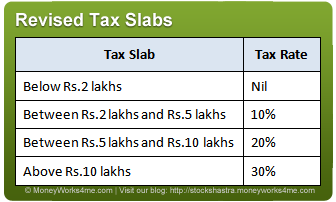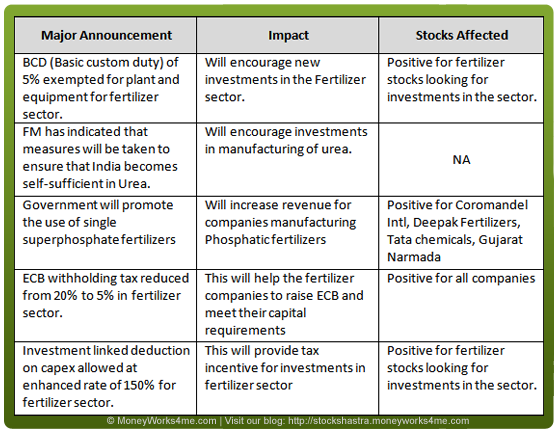Within 20 minutes of the start of his budget speech, the Finance Minister had raised the hopes of many people. He started his speech by saying, “While I believe that there should be no room for complacency, nor any excuse for what happens in one’s own country, we will be misled if we ignore the ground realities of the world.” He latter spoke about how it was “necessary to take hard decisions” and “to accelerate the pace of reforms and improve supply side management of the economy”. He further laid down five broad objectives that need to be addressed: Domestic demand, high growth in private investments, addressing supply-side bottlenecks, problem of malnutrition, governance and transparency. For a moment people just had a wishful thought that this would be the budget that would perhaps define the next decade; the way the New Industrial Policy of 1991 defined the decade of 1990’s.
But as he proceeded, all these hopes were belied; there were no big bang policy announcements on controlling fiscal deficit, nor did he seek to define how he would seek to meet his three major economic objectives. To be fair to him, this was a tough time for him to announce a big-bang-investor-friendly budget. He must also be appreciated for addressing some of the concerns of the Power and Infrastructure Industry. He should also get the benefit of supporting Agriculture based industry including fertilizers to improve agricultural productivity. He should also be congratulated for supporting UID (Aadhar) project, which can be a game changer in governance.
As far as the negatives are concerned, he has sought to control the fiscal deficit chiefly through three sources: increasing indirect taxes, disinvestment and spectrum sale. While the indirect taxes, Excise duty and Sales tax are going to increase the price of goods marginally, his lower target on disinvestment may not go down well with the market. The only joker up his sleeves then, is more than budgeted revenues from sale of spectrum, but given the weak balance sheets of most players its questionable how much of it is possible.
All in all, the budget did not include any major reforms. However, it did have some announcements of importance to the common man and few sectors.
Let’s have a look at what these are and what will be their impact.
Personal Taxation
The budget, in form of lower taxation brought some respite for the middle class which was struggling under the double whammy of high interest rates and increasing inflation. The most welcome step was change in income tax slab for those at 20% tax rate. The upper limit for this slab has now been raised from Rs.8 lakhs to Rs.10 lakhs. The standard deduction has also been raised to Rs.2 lakhs from the current Rs.1.8 lakhs.
Revised Tax Slabs
 There was also cheer for saving account holders. Interest from saving bank accounts up to a limit of Rs.10,000 will not be taxed for individuals with annual income up to Rs.5 lakhs. It has also been proposed that senior citizens who do not have any income from business be exempted from payment of advance tax.
There was also cheer for saving account holders. Interest from saving bank accounts up to a limit of Rs.10,000 will not be taxed for individuals with annual income up to Rs.5 lakhs. It has also been proposed that senior citizens who do not have any income from business be exempted from payment of advance tax.
A new scheme called Rajiv Gandhi Equity Savings Scheme has been proposed. It will allow income tax deduction of 50% to new retail investors who invest up to Rs.50,000 directly in equities and whose annual income is below Rs.10 lakh. The scheme will have a lock-in period of 3 years.
An income tax deduction of up to Rs.5000 has also been allowed on preventive health check-ups within the exemption allowed for health insurance. The budget also allowed a 50% deduction on short-term capital gains tax for new investors up to Rs.5 lakh. On the flipside the ambit of service tax has been expanded to include all services except a select few. This will lead to an increase in indirect taxation.
Lets now look at the impact on individual sectors:


The budget had a marginally negative impact on automobile industry, with prices of large and premium cars set to increase.


The budget was largely positive for the banking sector. Though no major announcements were made, the FM’s target to reduce fiscal deficit will indirectly benefit the sector as it will lead to reduced inflation which in turn will lead to a reduction in policy rates. It will also mean higher income from securities held by banks as yield on bonds will decrease.


The government has made many provisions to encourage new investments in the sector. This is positive news for the sector in the long run. However, the government has not increased the prices of Urea and also has not included urea in the ambit of Nutrient based subsidy policy. This is negative news for urea manufacturers in the country.


The budget was largely positive for the FMCG & Consumer durable sector. While cigarettes will become expensive for consumers, the rate hike was lesser than expectations Further, hike in excise duty on beedi and other tobacco products is positive for cigarette manufacturers and could lead to consumers shifting to cigarettes.


Budget 2012-13 has good emphasis on infrastructure development. Many initiatives have been taken to boost infrastructural activities in the country. Various measures taken are aimed at benefiting the infrastructure industry as a whole. Out of doubled limit of Rs. 60,000 Crs., Rs. 10,000 Cr. each has been allocated to NHAI, IRFC, IIFCL and power sector. Thus the spending by each of these agencies will flow to infrastructure space, either directly or indirectly. Besides as infrastructure shows growth, the allied industry like Cement, Steel and capital goods are also expected to show higher growth.


The government has not raised the prices of petroleum products thus aggravating the problems of under recoveries in the industry. Also, there is no clarity on government’s policy on fuel subsidy. Overall the impact was negative as majority of demands of the sector were not met by the government.


The Budget addressed certain important concerns of the power sector like domestic supply of coal and the high cost of imported coal. Moreover, the proposal to allow companies to finance their rupee debt via ECBs was a welcome move. However, the Budget entirely ignored the transmission and distribution sector which carries huge importance as the SEBs (distribution) are in deep financial trouble.
On the whole, the removal of customs duty on coal imports and the availability of ECB for part financing the rupee debt make the Budget a positive one for the power sector.
Conclusion:
These are not easy times for a Finance Minister, with economy under pressure and the Congress not fairing too well in the polls. If there is one thing he must be congratulated for, it should be for not falling to the temptation of presenting a populist budget. While most people would go home disappointed at this tepid budget, there are few things to cheer about where he did try to meet some of the objective he had laid down:
- Domestic demand: Tax exemption limit has been enhanced for the tax payer, the tax proposal is now closely aligned with the Direct Tax Code. Direct investment by an investor in to equity market will allow him to enjoy a tax expemtion of up to 50%.
- High growth in private investments, addressing supply bottlenecks: Positive steps have been taken in some critical industries: Power, infrastructure, Ports, Roads and Agri-related business.
- Governance and transparency: GST may finally come before the end of this financial year.
The government continues to expand the scope of UDI (Aadhar) project.
So while we congratulate the Finance Minister on not presenting a populist budget, he may have lost an opportunity to present a far reaching reformist budget before heading in to general election in 2014.
If you liked what you read and would like to put it in to practice Register at MoneyWorks4me.com. You will get amazing FREE features that will enable you to invest in Stocks and Mutual Funds the right way.
Need help on Investing? And more….Puchho Befikar
Kyunki yeh paise ka mamala hai
Start Chat | Request a Callback | Call 020 6725 8333 | WhatsApp 8055769463










I am amazed by the simplicity of the budget analysis, i have been reading budget since last 2 years but could not find a analysis like this. Keep it up. Hey there is some direct equity scheme tax deduction also mentioned for retail investors
A calculated compromise between developement and populism.
S.C.Kapur
Appreciate a comprehensive anaysis in simple form and substance. Wish if you could have added the revenue and expenditure summary…source and application of funds…